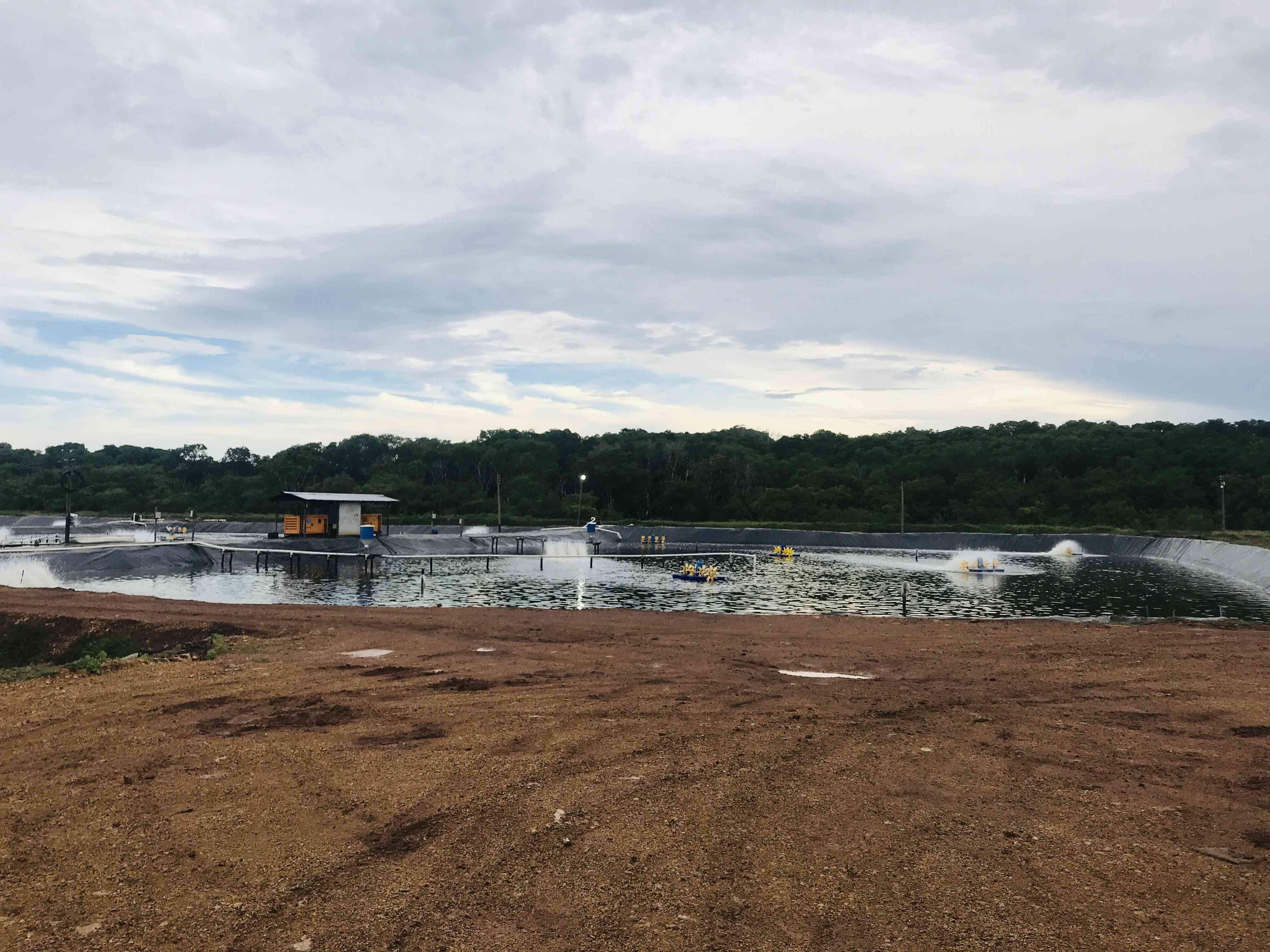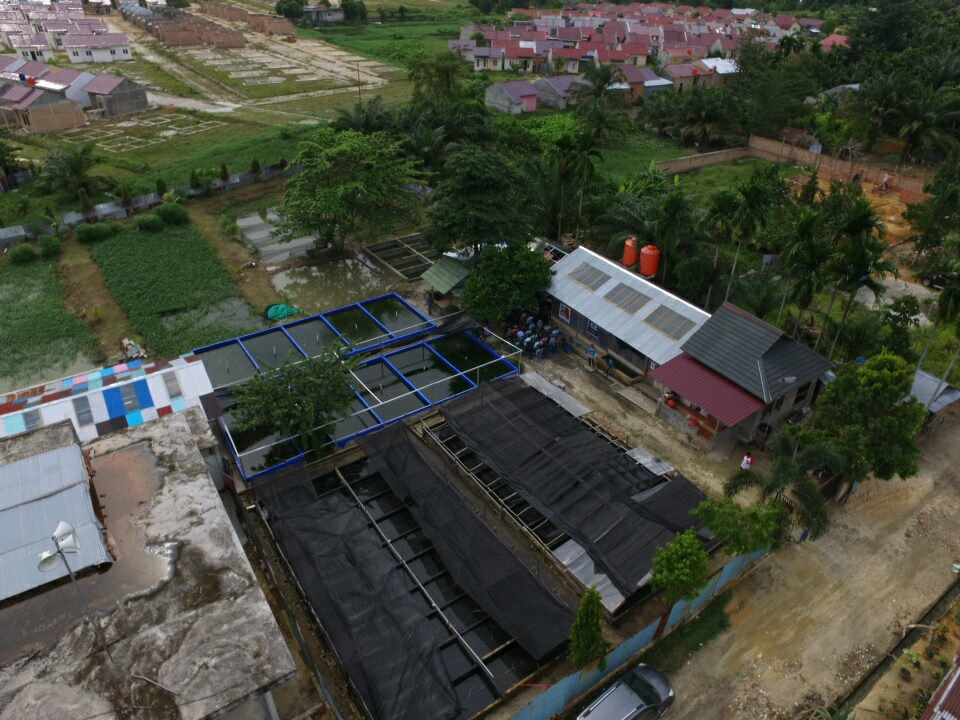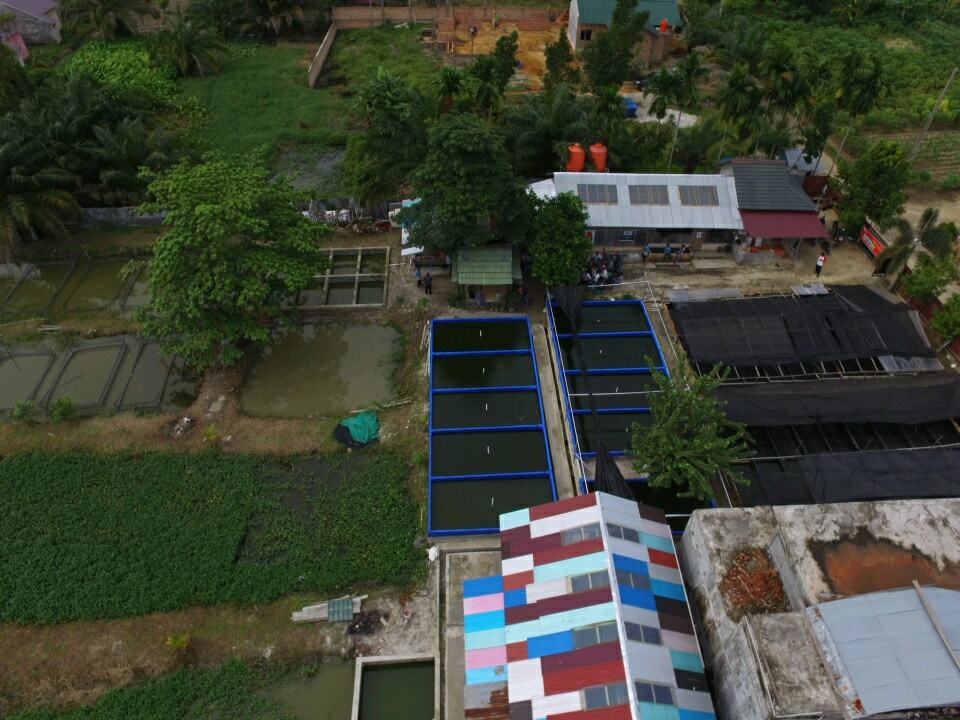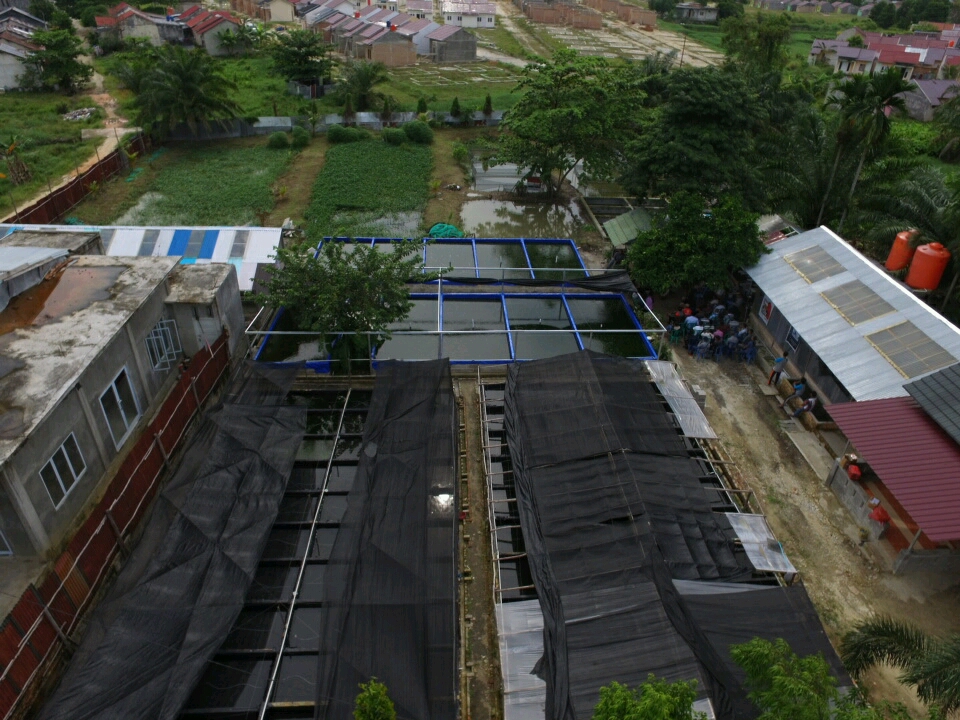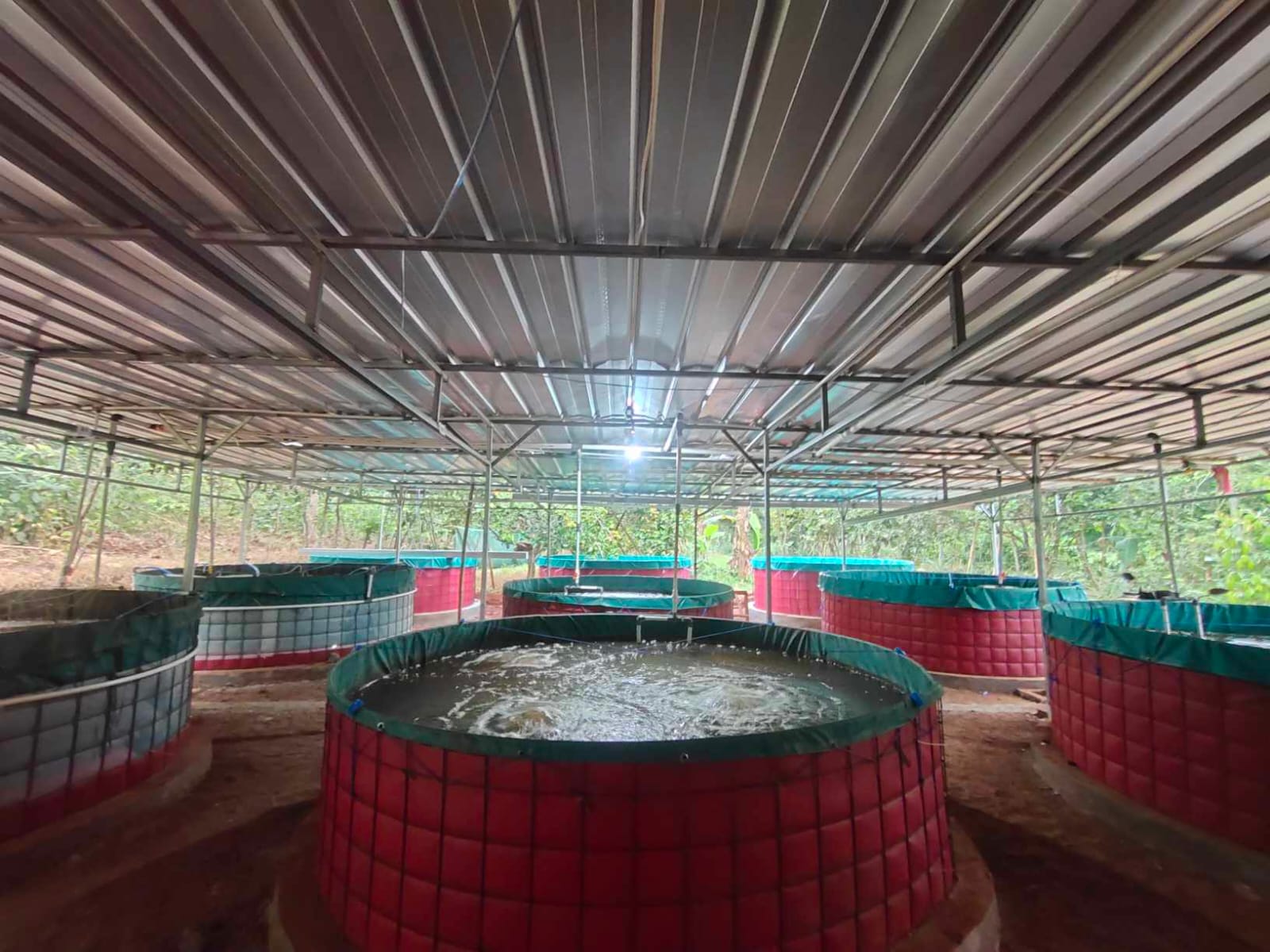The hatchery process for tilapia is a critical component of the aquaculture industry, ensuring the sustainable supply of high-quality fish stock. This process involves rearing fish from the larval stage until they reach a suitable size for transfer to grow-out ponds. As a fundamental part of the aquaculture production chain, hatcheries play an essential role in supporting fish farmers by providing superior-quality fry and fingerlings.
In Indonesia, tilapia is one of the most widely farmed fish commodities due to its high economic value, ease of cultivation, and adaptability to diverse environmental conditions. Over the past several years, Indonesia’s tilapia production has shown a consistent upward trend. According to DataIndonesia.id, the country produced 1.41 million tons of tilapia in 2022, generating an economic value of IDR 36.47 trillion. This marked a 4.27% increase from 2021, when production stood at 1.35 million tons with a total value of IDR 33.62 trillion.
This growth has continued into subsequent years. According to data from kkp.go.id, Indonesia’s tilapia production reached 1.38 million tons in 2024, rising from 1.36 million tons in the previous year. Additionally, demand for tilapia remains strong in both domestic and international markets, further solidifying its status as a promising business opportunity for fish farmers.
Indonesia is currently the world’s second-largest producer of tilapia, contributing approximately 26% of global production, trailing only China. However, despite its significant production volume, monitor.co.id reports that in 2023, 99.2% of Indonesia’s tilapia output was consumed domestically, with only 0.8% exported. The export value of Indonesian tilapia reached USD 82 million (approximately IDR 1.3 trillion), highlighting the vast potential for expanding Indonesia’s tilapia export market in the future.
Development of tilapia seed production in Indonesia
One of the key drivers behind the increasing production of tilapia in Indonesia is the development of a national seed network. The Ministry of Marine Affairs and Fisheries (KKP) has collaborated with various stakeholders, including PT Suri Tani Pemuka, to provide high-quality tilapia seeds, as stated in an official announcement on kkp.go.id. This collaboration involves both domestic and international universities in developing superior broodstock, supporting the government's initiatives in seed technology and tilapia cultivation.
According to kkp.go.id, Professor Alimudin, a senior academic at IPB University, emphasized that universities are committed to synergizing efforts in advancing seed and cultivation technology for tilapia. He highlighted that partnerships between private sector players and community-based hatchery units (UPR) play a crucial role in enhancing the production of superior broodstock and seeds.
In line with this vision, Fauzul Mubin, Head of Operation for Freshwater Fish Hatchery at PT Suri Tani Pemuka, affirmed the company’s commitment to supporting government programs in tilapia aquaculture, particularly in seed production. PT Suri Tani Pemuka remains dedicated to operating freshwater fish hatcheries with a primary focus on producing high-quality tilapia seeds. Mubin reiterated the company's ongoing efforts to supply superior seeds, ensuring the continuous growth and development of Indonesia’s tilapia farming industry.
Tilapia hatchery process
The process of tilapia seed production involves a series of carefully managed steps to ensure both the quality and quantity of the resulting fry. This process begins with the selection of mature male and female broodstock, a crucial step that significantly influences the quality of the offspring. Male broodstock are typically larger in size and exhibit brighter coloration compared to females. Female broodstock, on the other hand, are characterized by a softer and more distended abdomen, particularly when they are ready for spawning.
Following broodstock selection, the next step is the spawning process. Tilapia spawning generally occurs naturally by placing male and female fish together in a spawning pond at a specific ratio, commonly one male for every three females. The male fish will construct a nest at the bottom of the pond, with a diameter ranging from 30 to 50 cm, serving as the spawning site. This process typically takes about seven days. Throughout this period, it is essential to maintain good water quality and provide adequate nutrition to support successful reproduction.
Tilapia broodstock selection for the spawning process : BPBAT Tatelu
After spawning, the female tilapia lays eggs, which are then fertilized by the male. These eggs hatch into larvae within approximately one week. Newly hatched larvae usually swim toward the edges of the pond. At this stage, they are collected using fine mesh nets and transferred to pre-prepared nursery ponds. These ponds are typically fertilized with organic matter to stimulate the growth of natural food sources, such as plankton, which serve as an essential nutrient source for the larvae.
The nursery phase is carried out in several stages to ensure optimal growth of the fry. Each nursery stage lasts approximately 21 days. During this period, it is crucial to monitor water quality, food availability, and population density within the pond. Supplemental feeding with high-protein pellets can also be provided to enhance larval growth. After completing three nursery stages, the tilapia fry will reach an average size of 8–10 cm and weigh approximately 100 grams. At this point, the fry are ready to be transferred to grow-out ponds for the next phase of aquaculture.
Tilapia hatchery business analysis overview
The profitability of a tilapia hatchery business largely depends on the expenses incurred and the number of fry produced. To assess its potential profitability, a comprehensive business analysis is required, covering initial investment, fixed costs, variable costs, and projected revenue.
1. Initial Investment
Starting a tilapia hatchery requires several essential components. The initial investment includes land acquisition, pond construction, and the procurement of equipment and broodstock. One of the most critical factors is land, with an ideal area of 50 square meters. At an estimated price of IDR 1,500,000 per square meter, the total land cost amounts to approximately IDR 75,000,000.
In addition to land, pond infrastructure plays a crucial role. A total of nine ponds, each measuring 30 square meters, are required, with a construction cost of IDR 500,000 per unit, bringing the total pond construction cost to IDR 4,500,000.
Furthermore, essential farming equipment is necessary to support hatchery operations, with an estimated cost of IDR 250,000 per set. To ensure high-quality fry production, both male and female broodstock must be acquired. Two broodstock packages, priced at IDR 3,000,000 per package, bring the total broodstock cost to IDR 6,000,000. Thus, the total initial investment required to establish a tilapia hatchery is approximately IDR 85,750,000.
2. Fixed costs
In tilapia hatchery operations, several fixed costs must be considered, including asset depreciation. The depreciation of fishponds, which have an economic lifespan of five years, is calculated at IDR 900,000 per year from a total investment of IDR 4,500,000. Meanwhile, aquaculture equipment with a lifespan of two years undergoes depreciation of IDR 125,000 per year from an initial cost of IDR 250,000. Additionally, broodstock used for breeding has an economic lifespan of two years, with an annual depreciation of IDR 3,000,000 from a total cost of IDR 6,000,000.
Apart from depreciation, labor costs also constitute a significant component of fixed expenses. Each year, two workers are required, with a total labor cost of IDR 24,000,000. In total, the fixed costs for a tilapia hatchery amount to IDR 28,025,000 per year. These expenses must be carefully considered to ensure the hatchery operates efficiently and remains profitable.
3. Variable costs
In tilapia hatchery operations, variable costs represent a major component influencing daily activities. These costs include expenses for feed, fertilizers, and medications essential for the breeding process. Among these, feed constitutes the largest expenditure, covering both broodstock and juvenile fish.
For broodstock, a total of 2,300 kg of feed is required, with a unit price of IDR 7,000 per kilogram, resulting in a total expenditure of IDR 16,100,000. Meanwhile, feed for larvae and juvenile fish demands a significantly larger quantity—12,000 kg—amounting to a total cost of IDR 84,000,000.
In addition to feed, other necessities such as organic fertilizers and medications also contribute to variable costs. Organic fertilizers play a crucial role in improving water quality and supporting the growth of natural food sources for larvae. A total of 400 sacks of fertilizer, priced at IDR 10,000 per sack, leads to an overall expense of IDR 4,000,000. Additionally, medications required to maintain fish health are estimated at five packages, with a total cost of IDR 500,000.
When summed up, the total variable costs in tilapia hatchery operations reach IDR 104,600,000.
4. The overview of profitability
In tilapia hatchery operations, the primary revenue comes from selling fry that have reached the optimal size for grow-out, typically 3–5 cm. With a selling price of IDR 260 per fish and an annual production capacity of 2,700,000 fry, the total potential revenue from this business amounts to IDR 702,000,000 per year.
The total annual costs incurred in this business can be categorized into three main components: investment costs, fixed costs, and variable costs. Investment costs include land acquisition, pond construction, farming equipment, and broodstock procurement, totaling IDR 85,750,000. Fixed costs, which cover the depreciation of ponds, equipment, and broodstock, as well as labor expenses, amount to IDR 28,025,000. Meanwhile, variable costs, which include feed for broodstock, larvae, and fry, organic fertilizers, and medications, reach IDR 104,600,000. Altogether, the total annual expenditure sums up to IDR 237,225,000.
With an annual revenue of IDR 702,000,000 and total costs of IDR 237,225,000, the net profit generated from the tilapia hatchery business amounts to IDR 464,775,000 per year. This significant profit margin highlights the promising potential of tilapia hatchery operations as a lucrative business opportunity.



















